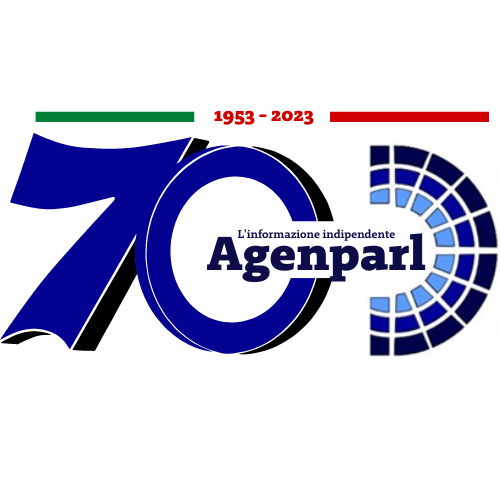 (AGENPARL) - Roma, 15 Luglio 2025
(AGENPARL) - Roma, 15 Luglio 2025(AGENPARL) – Tue 15 July 2025 No images? Click here https://hq_who_departmentofcommunications.cmail20.com/t/d-e-suixil-iitylyihjr-u/
15 July, 2025
News Release
Global childhood vaccination coverage holds steady, yet over 14 million infants remain unvaccinated – WHO, UNICEF [https://www.who.int/news/item/15-07-2025-global-childhood-vaccination-coverage-holds-steady-yet-over-14-million-infants-remain-unvaccinated-who-unicef]
15 July 2025 | Geneva / New York – In 2024, 89% of infants globally – about 115 million – received at least one dose of the diphtheria, tetanus and pertussis (DTP)-containing vaccine, and 85% — roughly 109 million – completed all three doses, according to new national immunization coverage data released today by the World Health Organization (WHO) and UNICEF.
Compared to 2023, around 171 000 more children received at least one vaccine, and one million more completed the full three-dose DTP series. While the gains are modest, they signal continued progress by countries working to protect children, even amid growing challenges.
Still, nearly 20 million infants missed at least one dose of DTP-containing vaccine last year, including 14.3 million “zero-dose” children who never received a single dose of any vaccine. That’s 4 million more than the 2024 target needed to stay on track with Immunization Agenda 2030 goals, and 1.4 million more than in 2019, the baseline year for measuring progress.
“Vaccines save lives, allowing individuals, families, communities, economies and nations to flourish,” said Dr Tedros Adhanom Ghebreyesus, WHO Director-General. “It’s encouraging to see a continued increase in the number of children being vaccinated, although we still have a lot of work to do. Drastic cuts in aid, coupled with misinformation about the safety of vaccines, threaten to unwind decades of progress. WHO remains committed to working with our partners to support countries to develop local solutions and increase domestic investment to reach all children with the lifesaving power of vaccines.”
Children often remain un- or under-vaccinated due to a combination of factors, such as limited access to immunization services, disrupted supply, conflict and instability, or misinformation about vaccines.
Access to vaccines remains deeply unequal
Data from 195 countries show that 131 countries have consistently reached at least 90% of children with the first dose of DTP vaccine since 2019, but there has been no significant movement in expanding this group. Among the countries that reached less than 90% in 2019, only 17 managed to increase their coverage rates in the past five years. Meanwhile, in 47 countries, progress is stalling or worsening. This includes 22 countries that achieved and surpassed the 90% target in 2019 but have since declined.
The data shows conflict and humanitarian crises can quickly erode vaccination progress. A quarter of the world’s infants live in just 26 countries affected by fragility, conflict, or humanitarian crises, yet they make up half of all unvaccinated children globally. Concerningly, in half of these countries the number of unvaccinated children has expanded rapidly from 3.6 million in 2019 to 5.4 million in 2024, underscoring the need for humanitarian responses to include immunization.
Immunization coverage in the 57 low-income countries supported by Gavi, the Vaccine Alliance have improved in the past year, reducing the number of un- and under-vaccinated children by roughly 650 000. At the same time, signs of slippage are emerging in upper-middle- and high-income countries that have previously maintained at least 90% coverage. Even small declines in immunization coverage can dramatically raise the risk of disease outbreaks and place additional strain on already overstretched health systems.
“The good news is that we have managed to reach more children with life-saving vaccines. But millions of children remain without protection against preventable diseases, and that should worry us all,” said UNICEF Executive Director Catherine Russell. “We must act now with determination to overcome barriers like shrinking health budgets, fragile health systems along with misinformation and access constraints because of conflicts. No child should die from a disease we know how to prevent.”
Broadening protection against vaccine-preventable diseases
Despite these challenges, countries – especially those supported by Gavi – continue to introduce and scale up vaccines, including against human papillomavirus (HPV), meningitis, pneumococcal disease, polio, and rotavirus.
For example, large national scale-ups of the HPV vaccine and revitalization efforts in countries that have previously introduced the vaccine, have boosted global coverage by 4% in the past year. In 2024, 31% of eligible adolescent girls globally received at least 1 dose of the HPV vaccine – most doses were administered in countries using a single-dose schedule. While far from the 90% coverage target by 2030, it represents a substantial increase from the 17% coverage in 2019.
“In 2024, lower-income countries protected more children than ever before, with coverage rates increasing across all Gavi-supported vaccines,” said Dr Sania Nishtar, CEO of Gavi, the Vaccine Alliance. “Yet population growth, fragility and conflict present major hurdles to achieving equity, leaving the most vulnerable children and communities at risk. Continued commitment from governments and partners will be critical to saving lives and protecting the world from infectious disease threats.”
Coverage against measles also improved, with 84% of children receiving the first dose and 76% receiving the second dose, which shows slight increase from the previous year. An estimated 2 million more children were reached in 2024, but the overall coverage rate is far below the 95% needed in every community to prevent outbreaks.
This results in more than 30 million children remaining under-protected against measles, leading to more large or disruptive outbreaks. In 2024, the number of countries experiencing large or disruptive measles outbreaks rose sharply to 60, nearly doubling from 33 in 2022.
The promise of protecting every child is at risk
Although the community demand for childhood vaccination remains high and protection against more diseases is expanding, the latest estimates highlight a concerning trajectory. National and global funding shortfalls, growing instability worldwide, and rising vaccine misinformation threaten to further stall or even reverse progress which would risk increases in severe disease and deaths from vaccine-preventable diseases.
WHO and UNICEF call on governments and relevant partners to:
· Close the funding gap for Gavi’s next strategic cycle (2026–2030) to protect millions of children in lower-income countries and global health security;
· Strengthen immunization in conflict and fragile settings to reach more zero-dose children and prevent deadly disease outbreaks;
· Prioritize local-led strategies and domestic investment, embedding immunization firmly within primary healthcare systems to close equity gaps;
· Counter misinformation and further increase vaccine uptake through evidence-based approaches; and
· Invest in stronger data and disease surveillance systems to guide high-impact immunization programmes.
Links:
Access the WHO dataset: Global dashboard [https://immunizationdata.who.int/] country profiles [https://worldhealthorg.shinyapps.io/wuenic-trends], and additional resources [https://www.who.int/teams/immunization-vaccines-and-biologicals/immunization-analysis-and-insights/global-monitoring/immunization-coverage/who-unicef-estimates-of-national-immunization-coverage]
Access the UNICEF dataset: Overview page [https://data.unicef.org/topic/child-health/immunization/], Full datasets [https://data.unicef.org/resources/dataset/immunization/], Data visualisation [https://data.unicef.org/resources/immunization-coverage-estimates-data-visualization/], Regional data visualisation [https://data.unicef.org/resources/regional-immunization-snapshots/], Country profiles [https://data.unicef.org/resources/immunization-country-profiles/]
Download multimedia content here: [https://weshare.unicef.org/Package/2AM4085D429Q]
Gavi factsheet [https://www.gavi.org/news/media-room/2024-wuenic-immunisation-lower-income-countries]
Notes to editors
WHO and UNICEF are working with Gavi, the Vaccine Alliance and other partners to deliver the global Immunization Agenda 2030 (IA2030), a strategy for all countries and relevant global partners to achieve set goals on preventing diseases through immunization and delivering vaccines to everyone, everywhere, at every age.
About the data
Based on country-reported data, the WHO and UNICEF estimates of national immunization coverage (WUENIC) provide the world’s largest and most comprehensive dataset on immunization trends for vaccinations against 14 diseases given through regular health systems – normally at clinics, community centres, outreach services, or health worker visits. For 2024, data were provided from 189 countries.
**************
About WHO
Dedicated to the health and well-being of all people and guided by science, the World Health Organization leads and champions global efforts to give everyone, everywhere, an equal chance at a safe and healthy life. We are the UN agency for health that connects nations, partners and people on the front lines in 150+ locations – leading the world’s response to health emergencies, preventing disease, addressing the root causes of health issues and expanding access to medicines and health care. Our mission is to promote health, keep the world safe and serve the vulnerable.
